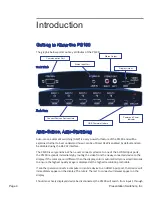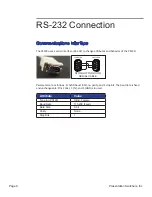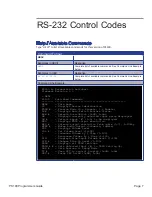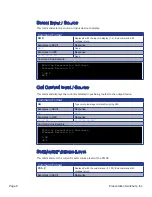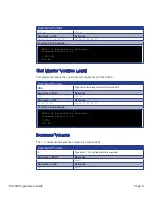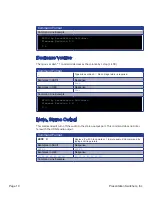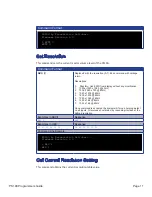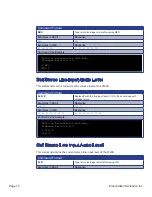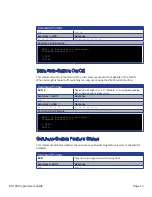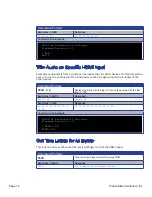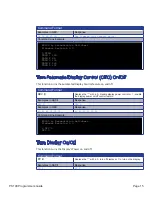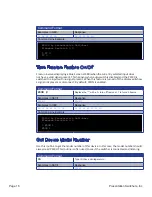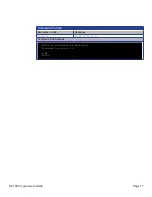
Page 5
PS190 Programmers Guide
input 5 for the first active signal. Once found, the image from that device will appear on the
display. From a design standpoint, consider having the home room computer on input 1 and any
ancillary or guest connections on inputs 2 through 5.
Automatic Display On/Off
Automatic display on/off (CEC) is another powerful feature of the PS190. CEC is enabled by
default but can be disabled using the RS-232 interface.
CEC must be enabled on the display itself for this feature to work with the PS190.
Trade names for CEC are (Samsung), Aquos Link (Sharp), BRAVIA Link and BRAVIA
Sync (Sony), HDMI-CEC (Hitachi), E-link (AOC), Kuro Link (Pioneer), INlink (Insignia), CE-Link
and Regza Link (Toshiba), RIHD (Remote Interactive over HDMI) (Onkyo), RuncoLink (Runco
International), SimpLink (LG), T-Link (ITT), HDAVI Control, EZ-Sync, VIERA Link (Panasonic),
EasyLink (Philips), and NetCommand for HDMI (Mitsubishi).
If a user connects to the PS190, the PS190 will automatically turn the display on. When the last
person disconnects, the PS190 will wait 30 seconds of inactivity then turn off the display. In
many cases, this feature eliminates the need for television remotes, extends display life, saves
power, and simplifies classrooms, conference rooms, and huddle spaces, making them more
user friendly.




